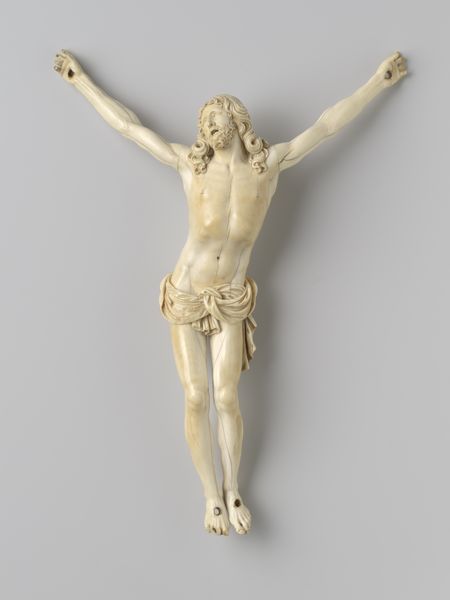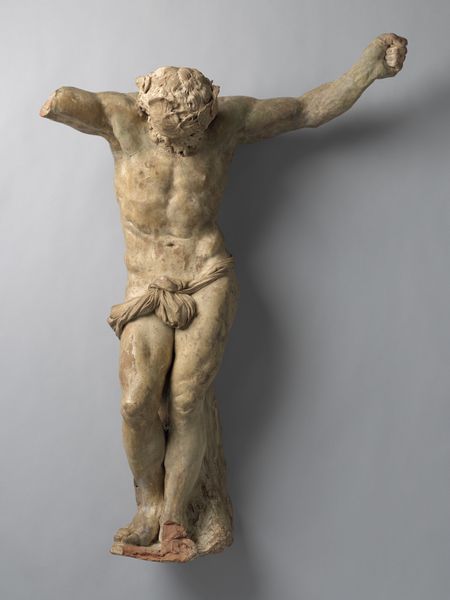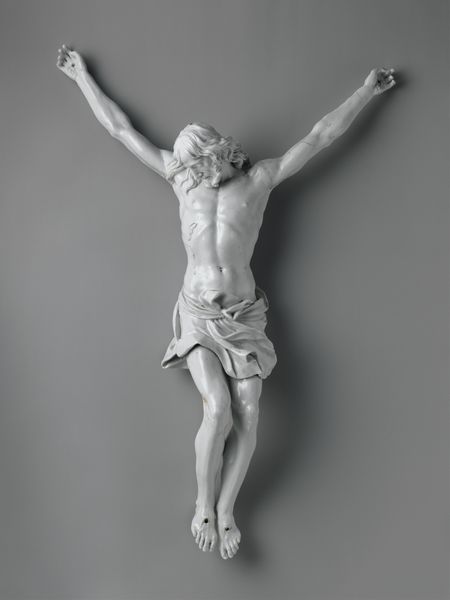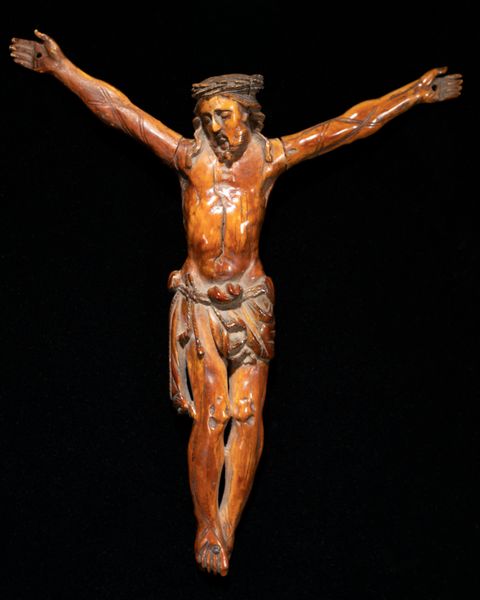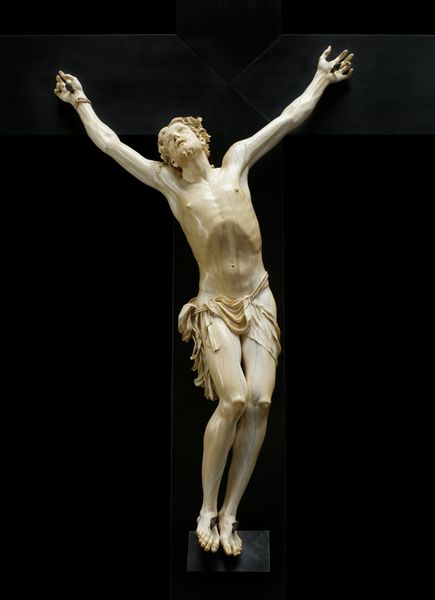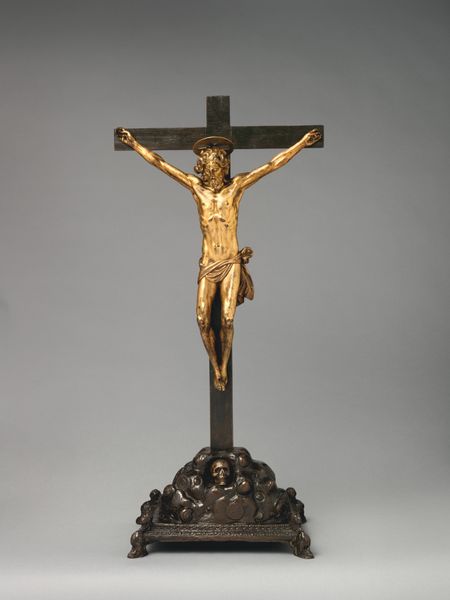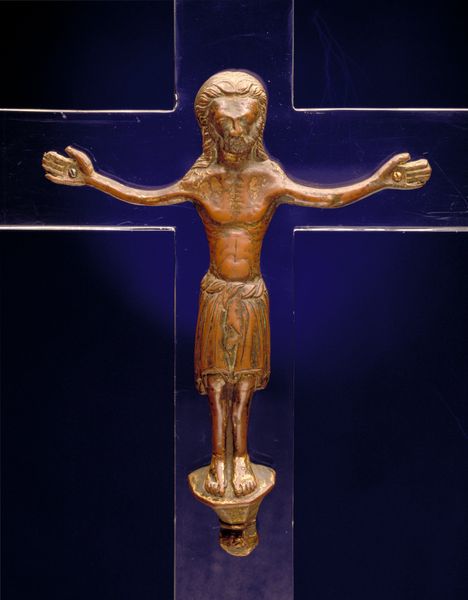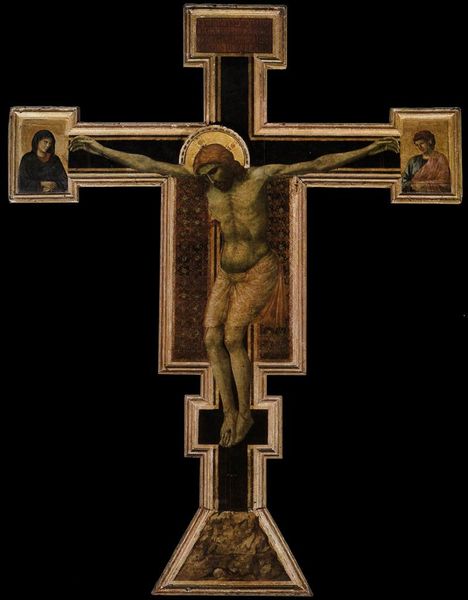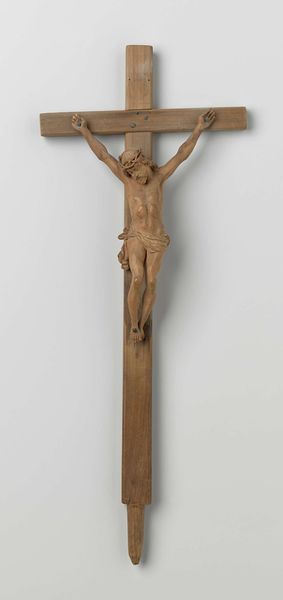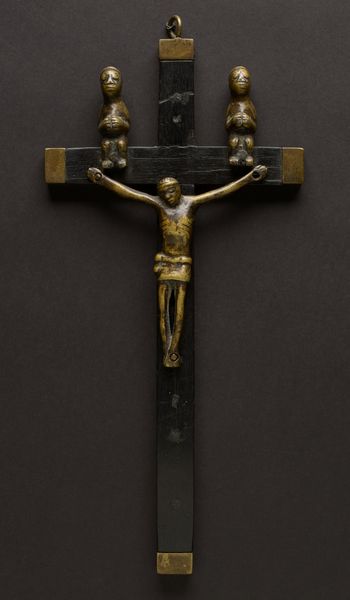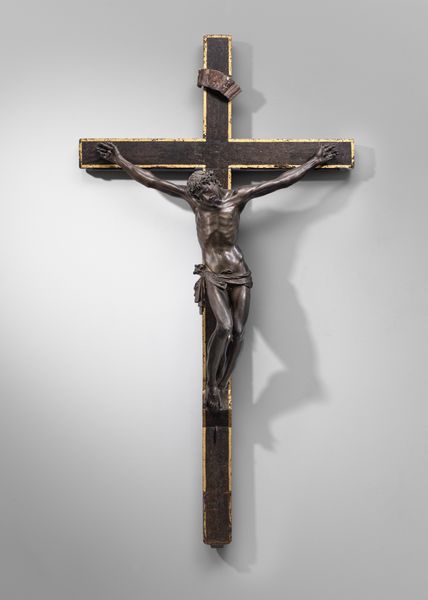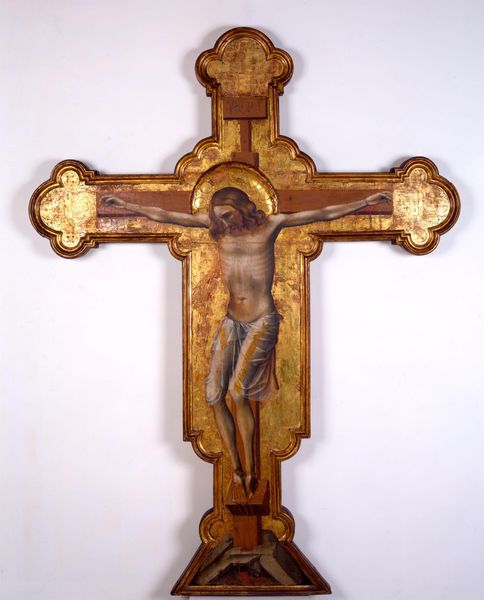
Corpus of Christ, from the Altarpiece of the Crucifixion 1391 - 1399
0:00
0:00
carving, sculpture, wood
#
medieval
#
carving
#
sculpture
#
gothic
#
figuration
#
sculpture
#
wood
#
crucifixion
#
history-painting
#
nude
Dimensions: 27.7 × 18.3 × 5.2 cm (11 × 6 1/4 × 2 1/16 in.)
Copyright: Public Domain
Curator: Standing before us is the "Corpus of Christ, from the Altarpiece of the Crucifixion" crafted between 1391 and 1399, attributed to Jacques de Baerze. It's a wood carving, currently residing here at The Art Institute of Chicago. Editor: Immediately, I'm struck by the starkness. The gaunt figure, almost skeletal in its rendering, is emphasized by the somber tone of the unpainted wood, save for that vibrant, golden loincloth. Curator: The figure, as a symbol, is extraordinarily potent. It encapsulates not just the physical suffering of Christ, but the weight of sacrifice and redemption narratives that shaped the late Medieval psyche. It's hard to ignore that potent imagery in the West. Editor: Indeed. But also consider how the sculptor has utilized the wood's grain. It seems to almost ripple, creating an unsettling texture on the skin. Note the lines of the neck and arms, so subtle but present. Curator: The work undoubtedly adheres to Gothic artistic sensibilities. Note how de Baerze captures elongated proportions, particularly in the torso, enhancing the overall feeling of spiritual ascension, that characteristic Gothic longing. Editor: Though I do think it has more going on visually than that. Consider the gilded drapery, it disrupts the linear nature, forming irregular angles against that slender lower body; they don't sit neatly, the intentional disharmony gives that stark composition added emotional nuance. Curator: Certainly. The gold adds a layer of complexity; an indication of the divine, almost out of sync with the realism that attempts to evoke both pity and awe through Christ’s humanity, especially for illiterate medieval churchgoers. Editor: It speaks to the artist’s skill in playing with visual binaries, setting a beautiful element of light with somber darkness. Overall, looking at it now, I get the sense that the success in carving out these sorts of stark details and embellishing them has set the tone for countless works after it. Curator: A potent symbolic image combined with refined and deliberate artisanship… a reminder that art during this period served purposes that went well beyond aesthetics; it touched both hearts and minds on a fundamental, emotional level.
Comments
No comments
Be the first to comment and join the conversation on the ultimate creative platform.
